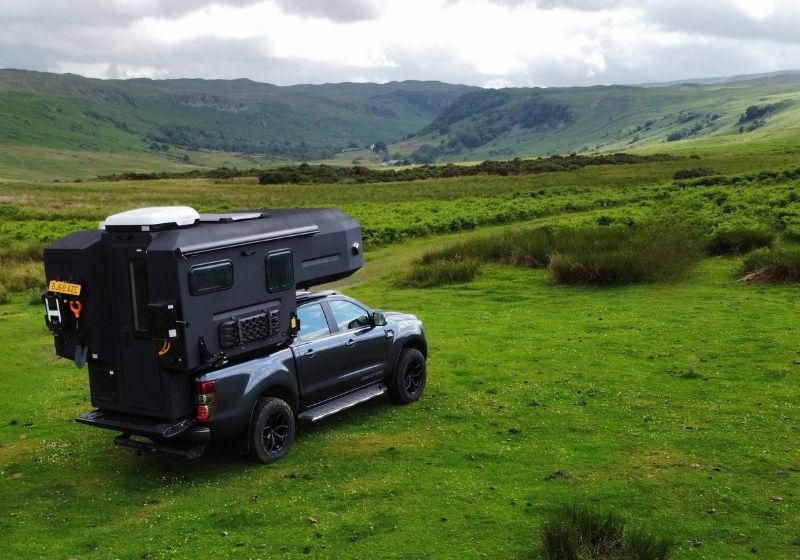
We sell this demountable camper
Hotomobil's truck camper comes in two sizes.
Better than a campervan, cooler than a motorhome
The overcab bed is 176x128cm and can extend lengthways over the dinette area to 190cm.
With heating, fridge, kitchen, toilet and showering facilities, you have everything you need for self-sufficient, wild adventuring.
Pick up truck camper: layout and prices of small and large models
Smaller models for more agility
Gladiator S: Team
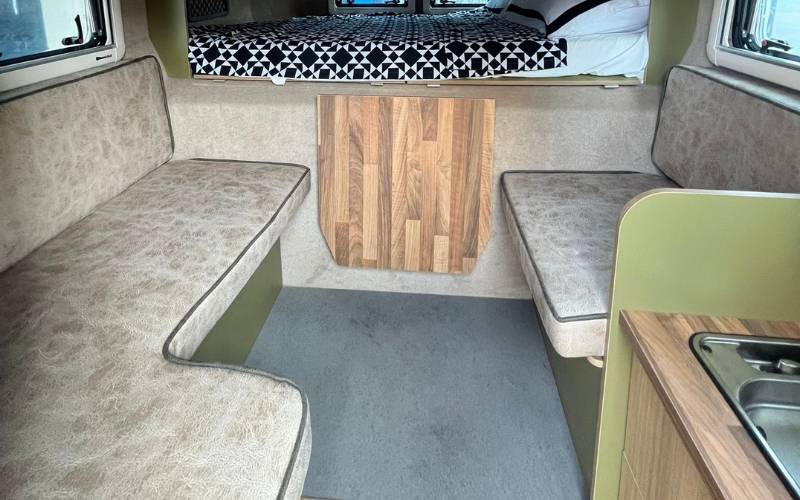
* Fixed bed extends to super king, fitting 2/3 people
* Keep warm with the diesel heater
* Clean gear and dogs with the external shower
* Kitchen ready to go
* Lights throughout
* USB charger
* Solar charger and electric hook up
Gladiator S: Adventure
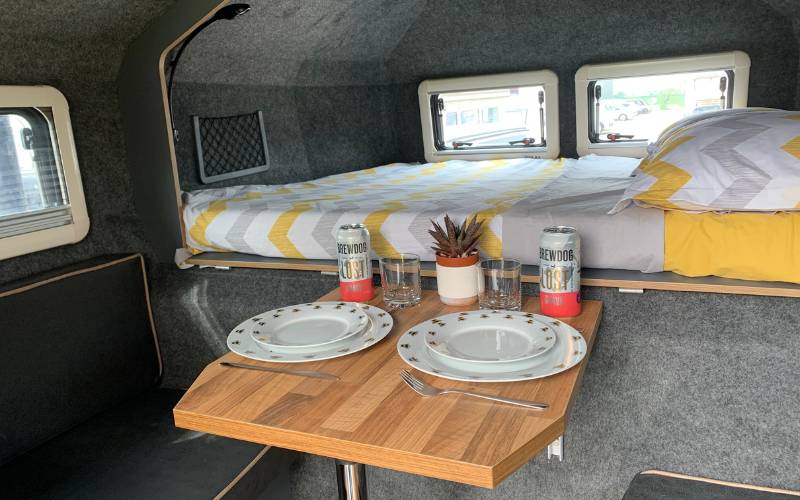
* Fridge freezer
* Hot water system
* Portable toilet
* Inverter to power 3 pin plugs
* Mud waffles, shovel and axe
* Hardened textured exterior coating, no seams
Gladiator S: Adventure+
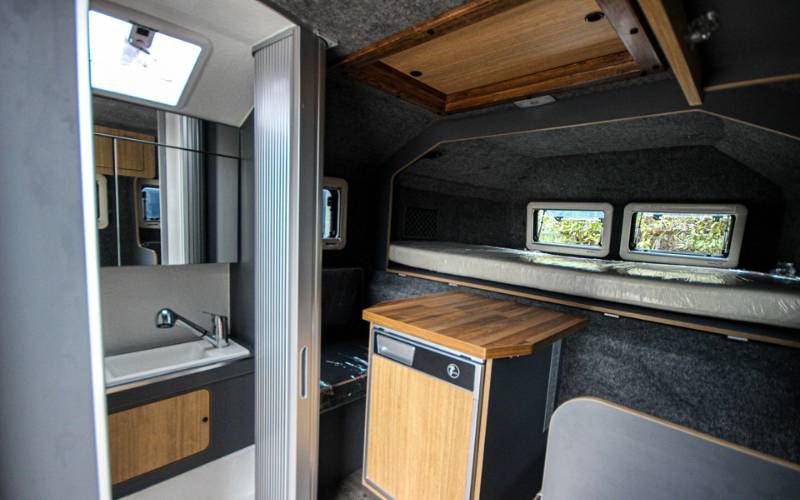
* Internal bathroom (with shower)
Expedition+
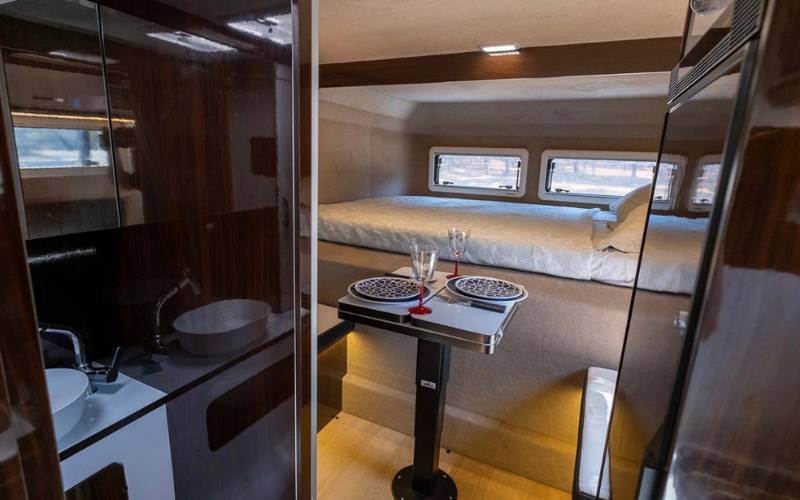
* Bigger internal bathroom
* Two ring hob
* Bigger fridge freezer
* Better spec battery
Larger models for extra comfort
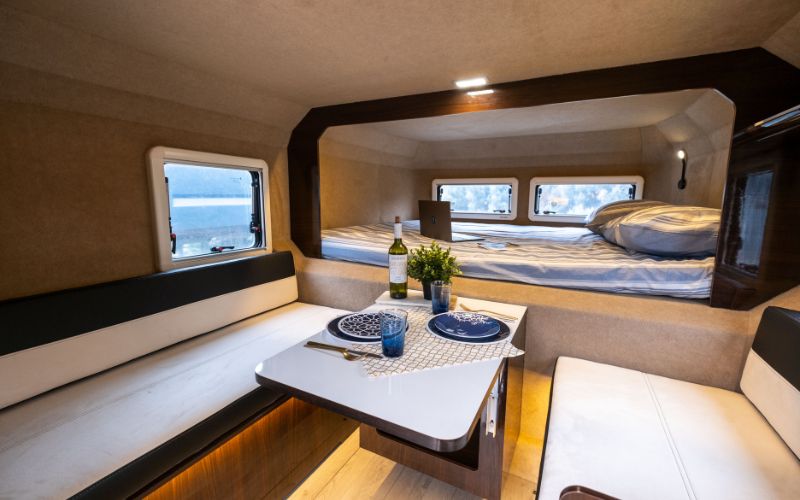
Expedition
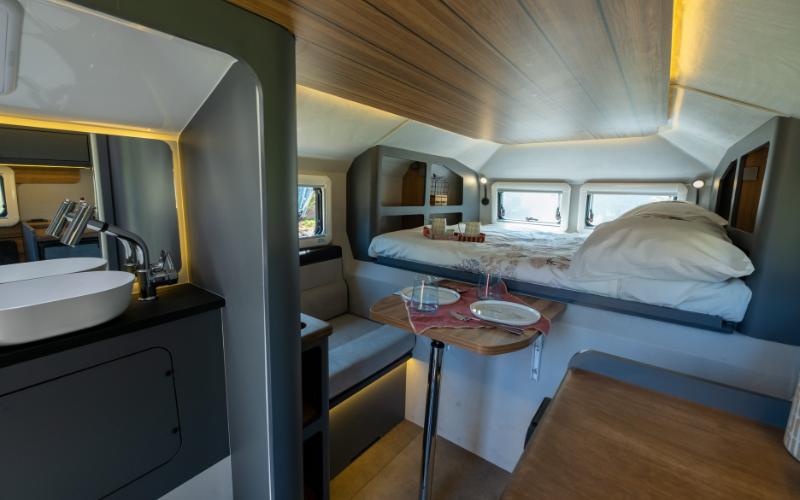
Adventure+ extended
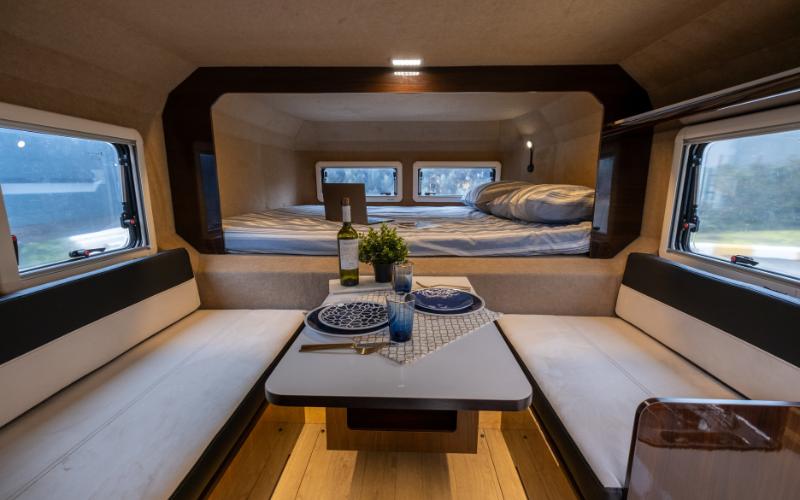
Gladiator SH: Expedition
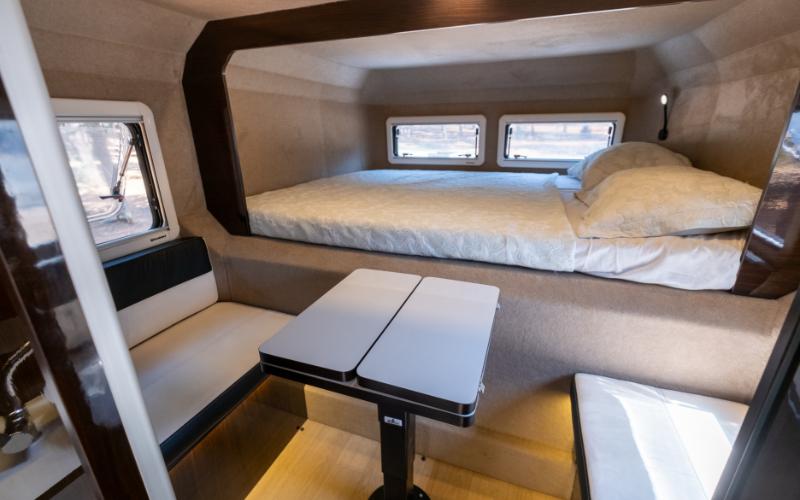
Gladiator SE: Expedition+
Extras to make life easier
Easily lift your hard top canopy
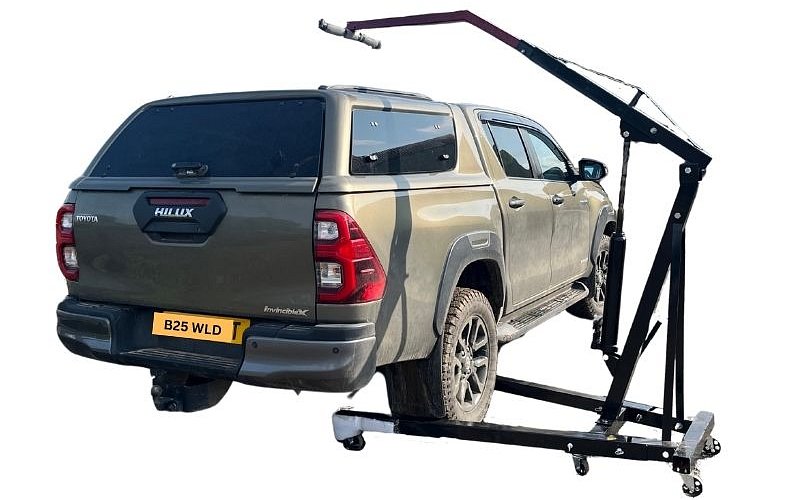
Effortlessly mount your canopy back on, too.
Sample offer 2

Viewing locations
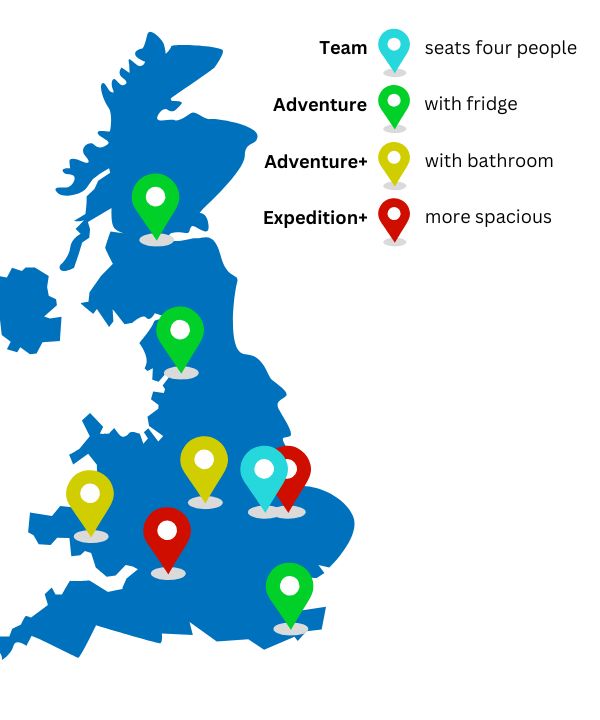
Looking for a camper for your pickup truck?
Here are some things to consider
Here are some things to consider by yours truly with contributions from the good people of the Demountable Facebook group - which you should join. You see a link all the way at the bottom of the page.
Consider space and storage to insurance – and, importantly, what to avoid.
Demountable campers – a portable unit that sits on your pickup and converts it into a camper – have been a thing for years in the US.
But they’re still quite niche in the UK, which makes them pretty awesome. And means you’ll get lots of admiring glances on the road.
With a demountable you get two vehicles in one – a pickup truck and a camper. And as they have legs, you can drive off for day trips leaving your camper in place.
They’re ideal for adventures off the beaten track. Camping off grid is the best, and having creature comforts while doing it with your camper truck, is – for me – even better.
Campervan, roof tent or demountable camper, which is best for me?
When choosing the ideal camping option for you, my advice would be to prioritise your needs and wants then weigh up the options.
Where do you want to camp?
Tents are ideal for wild camping purists. That was me once, but now I’ve had a bed, heating and kitchen in my demountable, I can’t go back!
How much space do you need?
How many people can they sleep?
What about inside space?
A demountable camper is compact, on a par with a short-wheel-base campervan. And it means you have the back seats as a ‘boot’. So you have more storage than a campervan in that sense.
Campervans are great, they work for so many reasons. Everything’s a compromise though. Having a bathroom takes up room and battles against having agility and eats into storage options.
Motorhomes are luxury on wheels with lots of space. But man, they’re boring. I first discovered demountables when looking for a leisure vehicle to hire out. I went to a dealership and was totally uninspired by the sea of white boxes. I mean no disrespect (my girlfriend has one and it’s excellent), but they’re just not for me.
Unless you have an annex, most roof tents have room for a bed and not much else, but if that’s all you need, then great.
Are you ok with making up a bed each evening?
In a demountable you’ll usually have a fixed bed for sleeping so there’s no messing around trying to make up a bed when you want to hit the hay.
My campervan had a rock and roll extendable bed. Though clever and space saving, it was annoying to have to make every night and put away each morning. People and stuff needed to be moved to do it and I found it such a hassle.
With a roof tent you usually have to remove your bedding when to pack it down.
Can a demountable camper be fitted to any pickup truck?
Demountable campers can be fitted to a wide range of pickups including Ford Ranger, Nissan Navarra, Isuzu D-Max, Toyota Hilux, Jeep Gladiator and Volkswagen Amarok. If you’re unsure, get in touch and we can advise.
How much do demountable campers weigh?
Pickup trucks are designed to take about 1 tonne over the rear axle. Most demountables weigh around 800kg, depending on the spec.
The Hotomobil Gladiator we supply starts at 500kg giving the drive more agility. So there’s plenty of weight to play with for other passengers and luggage before you hit the 1 tonne axle tolerance.
As a rule of thumb, a Ford Ranger with a driver, full tank of diesel and Hotomobil Gladiator demountable weighed in at 3 tonnes on a weighbridge.
How do I connect a demountable camper to my truck?
Demountables are fastened in place by either ratchet straps or turnbuckles. They connect to tie-down points in the truck bed which are each rated at about 300-500kg each.
The Hotomobil Gladiator demountable needs ratchet straps. 35mm width should be fine. When tightening, only go one click past tight. Drive a bit then check if another click is required.
If your demountable hangs over the back, it’s a good idea to consider having eye bolts behind the cab, driven all the way into the chassis as that can provide you extra strength.
You’ll notice, by the way, that tub roller lids and covers have to be removed to fit a demountable.
Do I need to make any changes to my pickup truck to have a demountable?
Given the constant weight in the back, it’s a good idea to improve the rear suspension. You can up-rate the rear leaf springs and / or use TUV approved airbags as well as stronger tyres (something like BFG KO2). They don’t increase the weight you can take in the back, but do rebalance the weight and improve how the truck handles.
Depending on the size of the demountable camper, you could also look at J braces to reinforce the pickup truck tub.
Milner off road are a good supplier of pickup parts.
If you’re opting for a bigger demountable, it can weigh around 800kg, which is closer to the 1 tonne allowance. You can get you can get your vehicle officially up-plated by about 230kg by somewhere like SVTech or Van Weight Engineering then send off to DVLA so it’s all official for you to carry a heavier weight in the back.
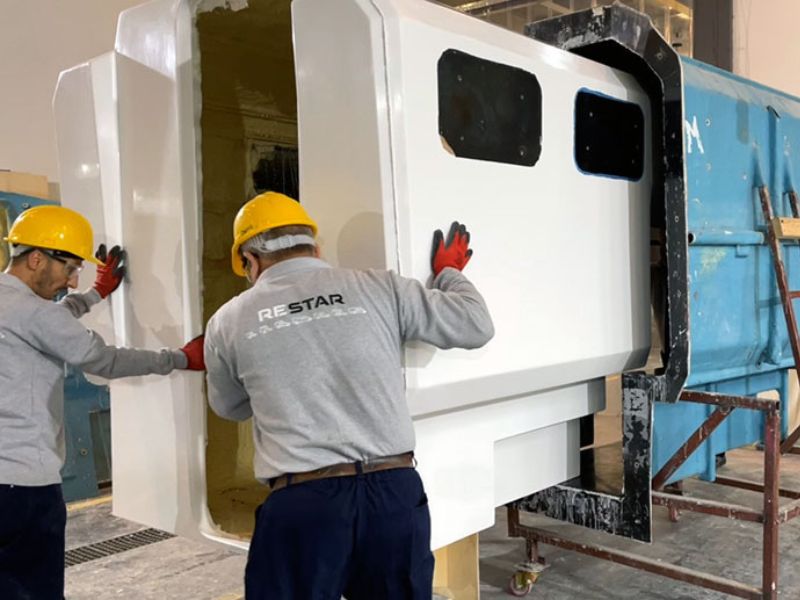
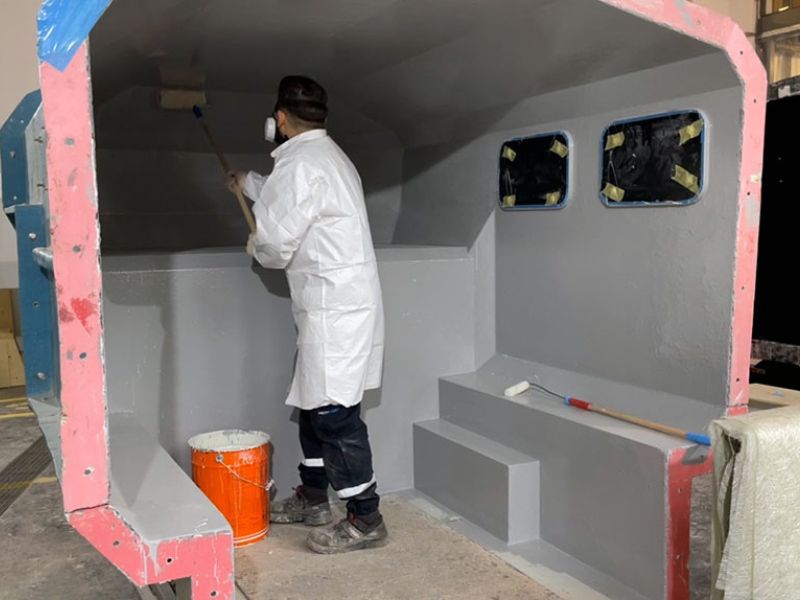
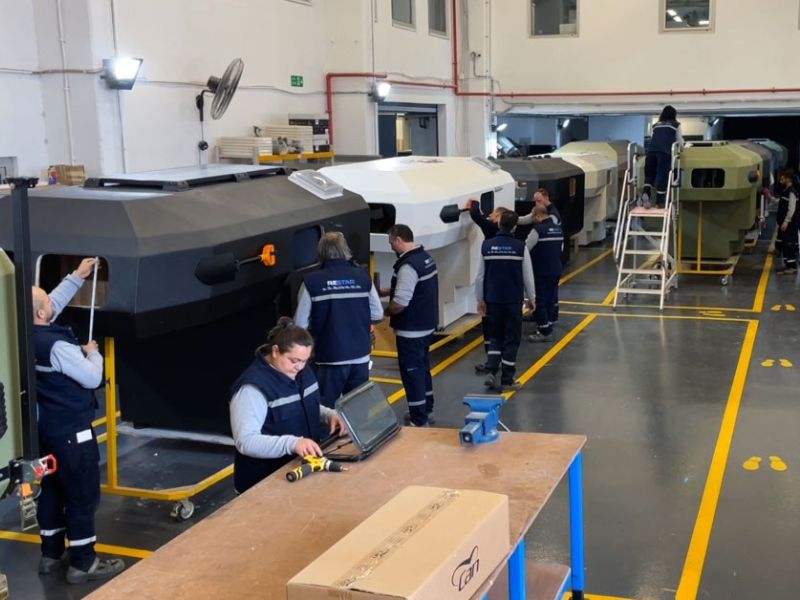
Is there anything to avoid when buying a demountable?
You want to avoid wooden demountables as they can rot easily. Also avoid those with panels, as they have seams at the edges, which let water in. This is because demountable campers can move a little with the movement of the pickup.
Look for a fibreglass, seam-free camper like the Hotomobil Gladiators.
How do demountable camper pickup trucks handle? And what about fuel consumption?
I can only speak for Ford Rangers handling Hotomobil Gladiators, which handle a lot like a car.
Of course there’s the weight in the back, but that’s easy to forget, especially as it’s all contained in the tub – with no overhang.
The thing to remember is the up-to 3m height, which is the same as a high-sided van.
It’s not a sports car, but it’s far from hefty or bulky.
I’ve had loads of hire customers who’ve only driven cars, and enjoyed driving this.
As a rule of thumb, fuel consumption is between 30-35 mpg.
How do you take a demountable camper on and off?
It takes practice and is no hassle once you’ve cracked it.
It’s easiest to take the demountable on and off on a flat surface, though it’s still very doable on a slope.
Take a leaf out of HGV driver’s book and once you’ve driven forward, mark a point on the demountable and also in your wing mirrors – perhaps with some tape. So long as you’re back in that position when you come to put it on again, you should be able to drive straight back.
Have a buddy guide you in. Walkie talkies make communicating easier.
You may also find it easier to remove the bed liner. If it’s permanently off and open to the elements, treating with polyurea to form a protective coating may be a good idea. Polyurea is the same tough stuff that’s on the outside of the Hotomobil Gladiator camper and the Navy use it to land helicopters on, apparently.
When the camper is off, people often store it on pallets so it’s at the correct height to put back on.
Where can I get demountable camper pickup truck insurance?
You’ll need to shop around for the best insurance deal.
I’ve heard good things about Adrian Flux, Motors Direct and Coast Insurance.
Where can I get advice on buying a camper?
Whatever you do, join the Demountable Facebook group. It’s full of friendly people and advice.
Look up NSR Leisure in South Wales, Renegade Campers in Southampton or Niche RV in Lincolnshire, if bigger demountable campers are your thing. All great guys. Those types of demountable campers aren't for me though. I know my lane; it’s green, muddy and wild.
Feel free to contact me and I can help you work out what’s right for you. I’ll happily talk you through the four Hotomobil Gladiator demountable camper models:
- Team: more seating, good for dog owners
- Adventure: has a fridge/freezer
- Expedition: has a shower room
- Style: a bigger bathroom model, coming in 2025
Viewing them is possible, though logistics and supply are challenging, so we’ll start with a video call and go from there for the people really serious about it.
